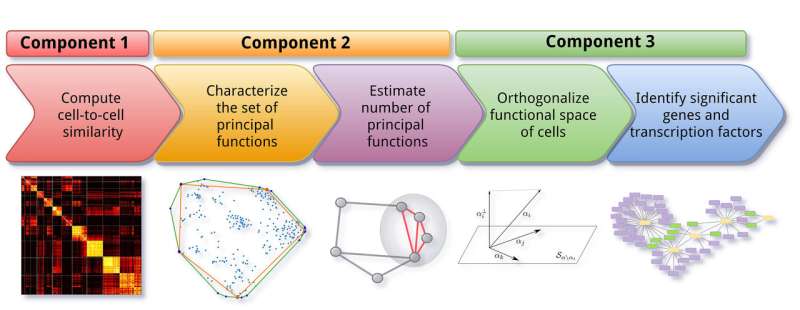New method for cell identification leads to discovery of melanoma subtypes

Cells have traditionally been categorized into different types, such as T-cells and B-cells, based on observable features. But new research published in Nature Communications shows cells are far more complex.
Purdue University researchers created an algorithm called ACTION to group cells based on their primary function and pinpoint the genes responsible for those functions. They also discovered a new subtype of melanoma, a form of skin cancer, which could lead to opportunities for more personalized therapies.
"We can interpret cells as types, but we should really think of them in terms of their functions," said David Gleich, an associate professor of computer science at Purdue. "They're not all purely one type. For example, our measurements can tell us if a cell is performing 80 percent one function and 20 percent another."
Not only is there variation in tasks performed by individual cells in one region, but cells also behave differently in different scenarios. Cells behave differently around a tumor than they would other places in the body, Gleich said. This information can be measured with high-resolution gene expression readings of individual cells.
The ACTION framework helps break down this information and fully characterize the functional profile of a cell. It has three major components: identifying the functional identity of cells, classifying them based on their dominant function, and reconstructing regulatory networks responsible for mediating their identity.
The newly uncovered subtypes of melanoma have different survival rates and therapeutic responses than standard melanoma. Factors that mediate cell function and switches that turn functions on and off were identified for these new subtypes, providing new biomarkers and potentially targets for future drugs.
"Our understanding of how human biology works is continuously evolving, and every time we get access to more refined data, we need new methods to help us refine our understanding," Gleich said. "Using a program like ACTION, we could acquire a functional landscape of cells for each person, which would allow us to do micro-targeting and really embrace the idea of precision medicine."
More information: Shahin Mohammadi et al. A geometric approach to characterize the functional identity of single cells, Nature Communications (2018). DOI: 10.1038/s41467-018-03933-2



















